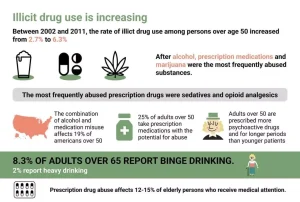Fentanyl Withdrawal: Symptoms, Detox Timeline, & Treatment

This makes withdrawal symptoms appear quickly, and people who use fentanyl are compelled to go out and pick up another dose very soon. If you have taken fentanyl for more than two weeks, you should work with your doctor on a plan to stop taking it. Opioid withdrawal symptoms can be severe, and most people benefit from medical supervision while detoxing.
- Patients in withdrawal should not be forced to do physical exercise.
- Opioid withdrawal syndrome is a life-threatening condition resulting from opioid dependence.
- It should not be used in place of the advice of your physician or other qualified healthcare providers.
- All opioid dependent patients who have withdrawn from opioids should be advised that they are at increased risk of overdose due to reduced opioid tolerance.
- But these tips can reduce some of that risk and lower your chances of overdose, infection, or other problem.
How Long is Fentanyl Detox?
In the United States, more than 73,000 people died from overdoses involving synthetic opioids in 2022, a 25-fold increase from 2010 [1]. Rhode Island (RI) is one of the states hardest-hit by the opioid overdose crisis, where the incidence of fatal opioid overdose far exceeds the national average [7]. Fentanyl and fentanyl analogs were first detected in RI in 2013; [8] overdose deaths subsequently increased rapidly, with fentanyl contributing to over 78% of overdose deaths in 2023 [9]. Biosurveillance data of suspected overdose cases confirm that fentanyl and its analogs continue to be the main drivers of the opioid overdose epidemic in RI [10, 11].
- These are often called post-acute withdrawal symptoms, and they may occur for a few months after stopping fentanyl.
- However, the fentanyl withdrawal timeline may vary depending on the person’s metabolism and how long they have been using the drug.
- These symptoms can begin a few hours after you stop taking fentanyl and last several days.
- On the second day, the determined dose can be given once or twice a day.
Fentanyl Detox and Withdrawal
AW, JT, MB, and NB reviewed the full text of the articles and 173 studies. Uncertainty was resolved by discussion of AW, JT, MB, and NB as needed. Patients how long does iv fentanyl stay in your system should be observed every three to four hours to assess for complications such as worsening anxiety and dissociation, which may require medication.

History and Physical

Symptomatic medications should be offered as required for aches, anxiety and other symptoms. Stimulants are drugs such as methamphetamine, amphetamine and cocaine. Although these drugs vary in their effects, they have similar withdrawal syndromes.

Alcohol Withdrawal Scale8
That evening, Doe’s friend, Malatare, had visited with Doe outside the residence. Doe and his mother then had dinner, during which she noticed Doe had a hard time staying awake. Forensic testing and an autopsy conducted on Doe’s body showed that he had fentanyl in his blood and urine. A medical examiner concluded that Doe had died of acute fentanyl intoxication. Those trends over the past decade have also been reflected in the DPHHS data for Missoula County.
- These symptoms can be managed using anti-psychotic medications and will usually resolve within a week of ceasing stimulant use.
- As your body gets used to the drugs, you need higher doses to achieve the desired effects.
- The buprenorphine product Suboxone is commonly used during opioid detox.
Responding To An Overdose
Such work is especially important considering fentanyl and other synthetic opioids are likely to persist in opioid and other drug supplies. These findings suggest that higher buprenorphine doses could be more effective in managing opioid use disorder, which may be particularly relevant for improving treatment for those who use fentanyl, a major driver of the overdose crisis. Other studies have also examined low-dose buprenorphine initiation protocols that may not require full agonist–opioid bridging. For example, a 20 mcg/h transdermal patch can be used for the initial 24–48 hours, with 8 and 16 mg sublingual buprenorphine administered at the 24 and 48 h mark, respectively. On day 3, the transdermal patch was removed and followed by sublingual buprenorphine titration. Most patients evaluated retrospectively with this method were reported to tolerate it fairly well.37 This protocol is summarized in Table 2.
Deja una respuesta